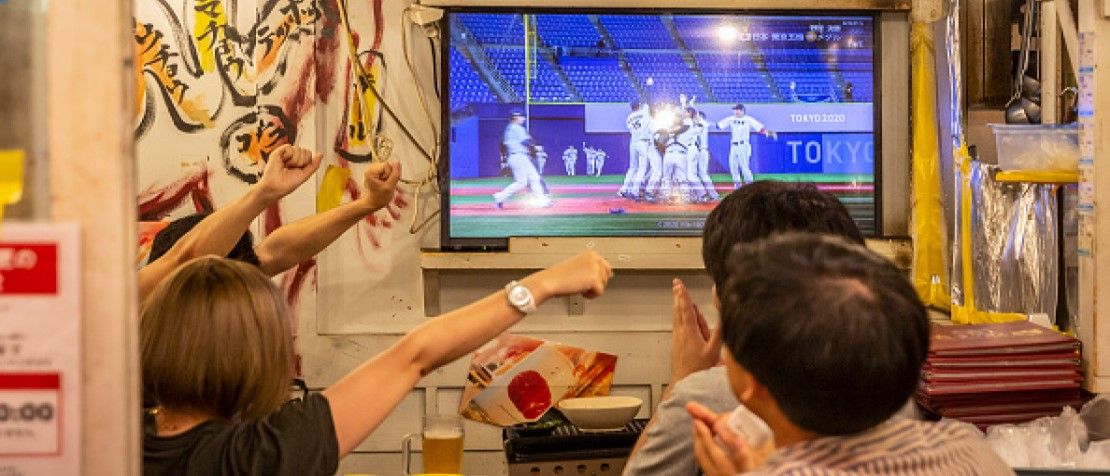
Behind the latest Olympics broadcasts: TV tech brings the world together
World Television Day, marked every 21 November, celebrates the impact of television as a tool for educating, informing, and entertaining viewers around the world. The COVID-19 pandemic brought the sports world to a standstill as countries restricted public gatherings to slow-down the spread of the virus. Stadiums across the globe fell silent as football, tennis, cricket fans were banned from gathering.
Not even the greatest gathering of sports men and women for the Olympic Games were spared from the global lockdown.
The gradual return of sporting activities during 2021, albeit with limited or no fans at all, saw families and sports fans turn to television and broadcasting technology to watch and cheer their favourite teams.
This year’s Olympic Games – held in Tokyo, Japan, amid the ongoing pandemic, with international spectators prevented from attending – pushed the boundaries of sports broadcasting and turned tragedy into triumph through the power of television.
The mandate of the Olympic Games, to bring the nations of the world together in a shared celebration of sports and the values of excellence, respect, and hope, has never rung truer than at Tokyo 2020, as this edition was called.
Olympic TV firsts
Tokyo 2020, ultimately postponed to July 2021, broke new ground in Olympic broadcasting. These were first Games to be fully produced, on site, in ultra-high-definition television (UHDTV), with high dynamic range (HDR) images bringing viewers closer to the athletes than ever before.
A next-generation immersive audio configuration (5.1.4) enabled equipped Games viewers to enjoy a more realistic audio experience, with sound seeming to come from every direction – even from above.
Television has become increasingly” fluid”, with programming moved seamlessly between devices or restarted without any need for deliberate recording.
The advent of streaming to laptops, tablets, or smartphones, as well as via social media, has prompted the demand for content to explode.
The latest camera technologies can capture thousands of images every second and can even “see” colour in near-total darkness. Beneficial not just for sports programming, such advances have transformed documentary filmmaking with the ability to capture stunning images of wildlife and the natural world. Thanks to these technological advances, television productions now rival cinema in terms of image quality.
Standardizing HDR and AI use
The International Telecommunication Union (ITU), as the United Nations specialized agency for information and communication technologies, brings experts from around the world together to develop standards for global communications.
These include ITU Radiocommunication Sector (ITU-R) Recommendation BT.2100 for high-dynamic range (HDR) images, which featured prominently in the latest Olympic Games.
Other areas of ITU study related to television include advanced immersive sensory media, object media, and artificial intelligence (AI) applications in broadcast media production.
Massive computing power lets AI automate numerous complex tasks. In broadcasting, as in other fields, these technologies are progressing at an incredible pace.
Augmented studio techniques, for example, now enable the real-time combination of real and virtual reality objects.
Viewers can increasingly personalize content to match their devices and, just as importantly, make use of advanced and sophisticated tools to make content accessible based on each person’s specific needs.
AI supports real-time caption translation into multiple languages and text-to-speech for live programmes. On-screen data from a sporting event, for instance, can be inserted into live commentary as an audio description.
More examples can be found in ITU reports Collection of usage scenarios of advanced immersive sensory media systems (Report ITU-R BT.2420), and Artificial intelligence systems for programme production and exchange (Report ITU-R BT.2447).
Forecasting broadcasting
Studies examining the future of television broadcasting recognize the rapidly changing technology landscape, in which viewers can enjoy audio-visual content delivered through a growing number of platforms and reproduced on a wide variety of user devices.
But the availability of sufficient radio-frequency spectrum remains crucial.
Television broadcasters rely on globally coordinated spectrum use, whether to reach their audiences in conventional ways, to connect with viewers on the move who watch on mobile devices, or to let viewers delve into a wider range of immersive, personalized, high-quality content.
Header image: People watching the baseball gold medal game on television at a bar celebrate Japan’s victory on day fifteen of the Tokyo 2020 Olympic Games on August 07, 2021 in Tokyo, Japan. Photo by Yuichi Yamazaki/Getty Images
